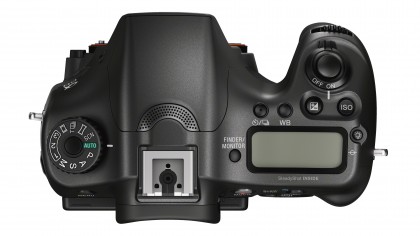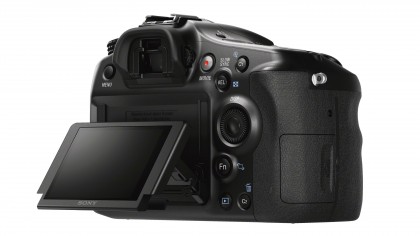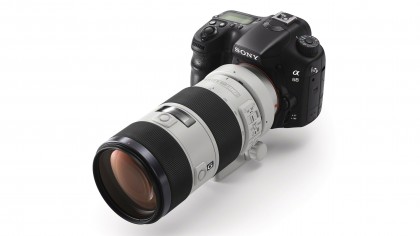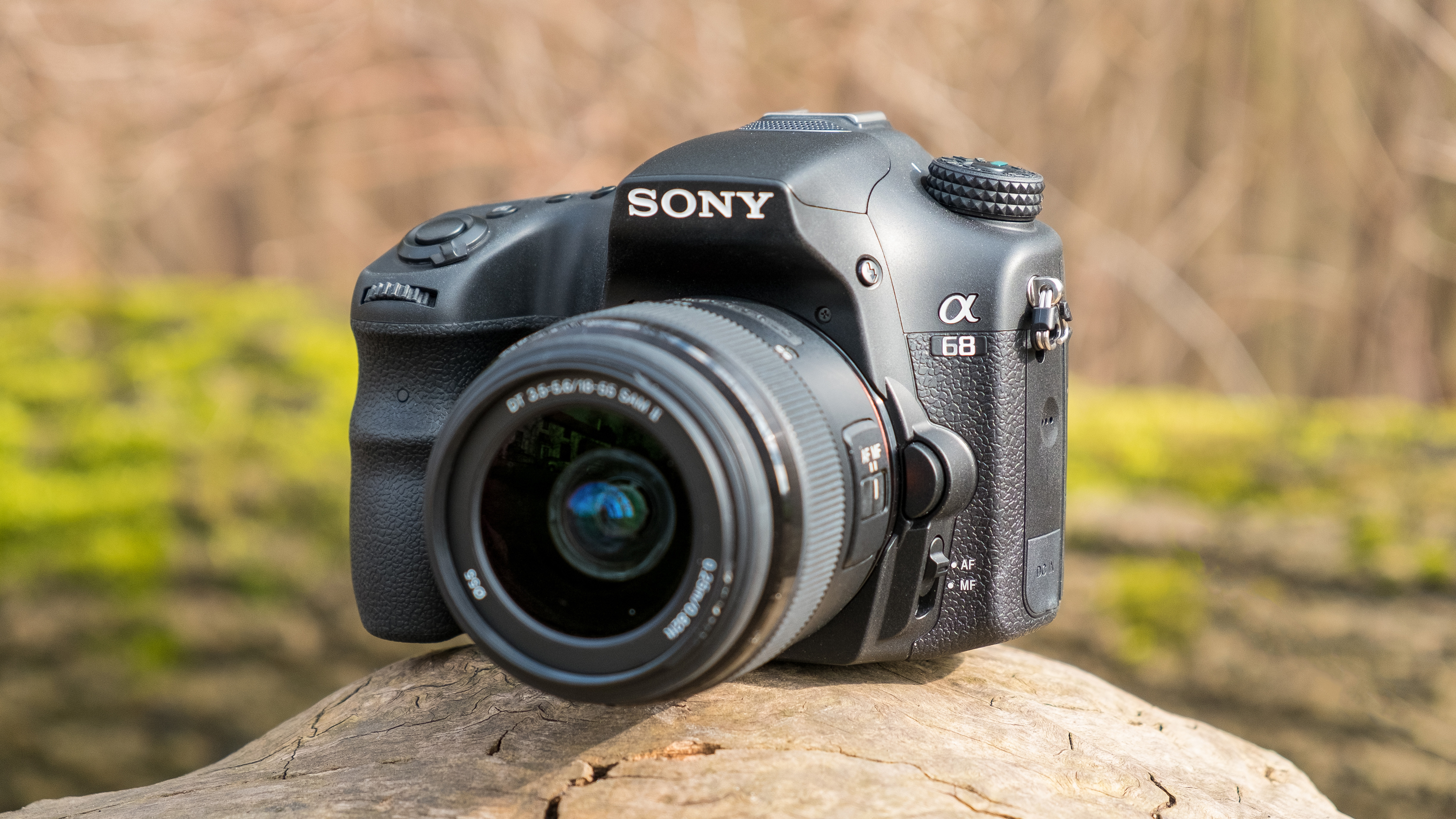Why you can trust TechRadar
DSLRs or DSLR-style cameras at this price tend to be relatively compact and lightweight, and for beginners or younger users this may be ideal. The A68, however, has a more substantial body akin to enthusiast DSLRs; closer examination of its spec sheet shows its dimensions to be exactly the same as those of the more advanced A77 II.
This may appeal to those with larger hands, who may find rival bodies too small for comfort, or those who may intend to use it with larger, heavier optics requiring a supportive host body (or indeed, those who fall into both camps). Even considering its target audience and price the body does feel somewhat plasticky, but then it doesn't pretend to offer the kind of solid magnesium alloy construction of more advanced cameras.
Its grip is large and deep, and has clear indentations for the middle and ring fingers, with plenty of textured rubber around it for comfort. At first it appears as though this rubber extends all the way around the side and through to the back plate, but in actuality it stops at the side and what continues instead is a plastic that's very similar in appearance but rougher to the touch, ostensibly to keep costs down. Still, even with this, the camera handles excellently and provides plenty of room to get good purchase.
The inclusion of a top-plate LCD is a pleasant surprise as it's usually confined to more advanced cameras. It's also reasonably large in size, which means that it can display plenty of information, from the standard exposure parameters, battery life and shots remaining at current settings through to white balance, drive mode, ISO and so on. The small button at its side powers up an orange lamp and this evenly illuminates the display, making it easy to view in darker conditions.
The remainder of the top plate offers a rubbered command dial; while tactile and easy to turn, there is a minor lag between this being turned and the changes to be registered by the camera. There are also buttons for ISO, white balance, drive mode and exposure compensation, as well as a control to alternate between the EVF and the rear LCD. The position of the first four works particularly well as these can have their settings adjusted easily by the thumb's rotation of the rear control wheel.

On the other side of the flash lies a tall, rubbered mode dial centred with a release button; this is tall enough to be comfortably operated, although the slope of the hump leading up to the hotshoe proves to be a less than ideal when turning.
The control wheel on the back turns very easily, making light work of menu navigation and control adjustment, although it doesn't stand away from the back plate as far as expected. In practice, this means that getting a good grip and turning it without rubbing the body around it is tricky.
Sign up for breaking news, reviews, opinion, top tech deals, and more.
Otherwise, the controls on the rear are large, well spaced out and clearly marked, and all press into the camera well. Not only are two of these designed to be customisable too – marked C1 and C2 – but digging around the menu reveals that the majority of other buttons can also have their functions changed, from the often customisable AEL button and preview button on the front plate to the ISO and exposure compensation dial.
With regards to design, the camera's main sore point is its shutter-release button. The issue here is twofold; not only does it lack of any discernible point between focus and shutter release, but the shutter is also released far sooner than expected. Admittedly, not all cameras have the former, but these tend to offer more travel in the focus region to make the separation clear. Here there is very little, and in practice this meant that I often ended up taking an image when I was simply trying to focus on a subject.

The LCD screen appears uninspiring on paper, with the advantage of being tiltable but its small size and low resolution look disappointing, so it comes as little surprise that its performance is also below par. With a border on the right hand side and shooting information across top and bottom borders, the actual preview occupies less of the display than is suggested by its size, and it lacks the contrast and bite expected when composing images, with the scene appearing somewhat washed out.
Its viewing angle and ability to deal with reflections is also poor, although being tiltable (if a little stiff) does allow the user to adjust this to a more convenient opposition where required. The menu system, however, is a pleasure to use, with a fine contrast, clear text and a colour-coded, tabbed structure. While a higher resolution would no doubt make the text a little crisp, in balanced conditions the screen's shortcomings aren't an issue here.

While the viewfinder doesn't provide the kind of crispness and contrast of the 2,36 million dot screens we're seeing on many compact system cameras, for a beginner-oriented model it performs very well. Its 1.44-million dot resolution displays details well and reasonably fluidly in good light, with just a slight lagging and increase in noise as light levels fall. Some may find the shooting information around it a little on the small side, but it's good to see so much of this displayed for quick reference.
